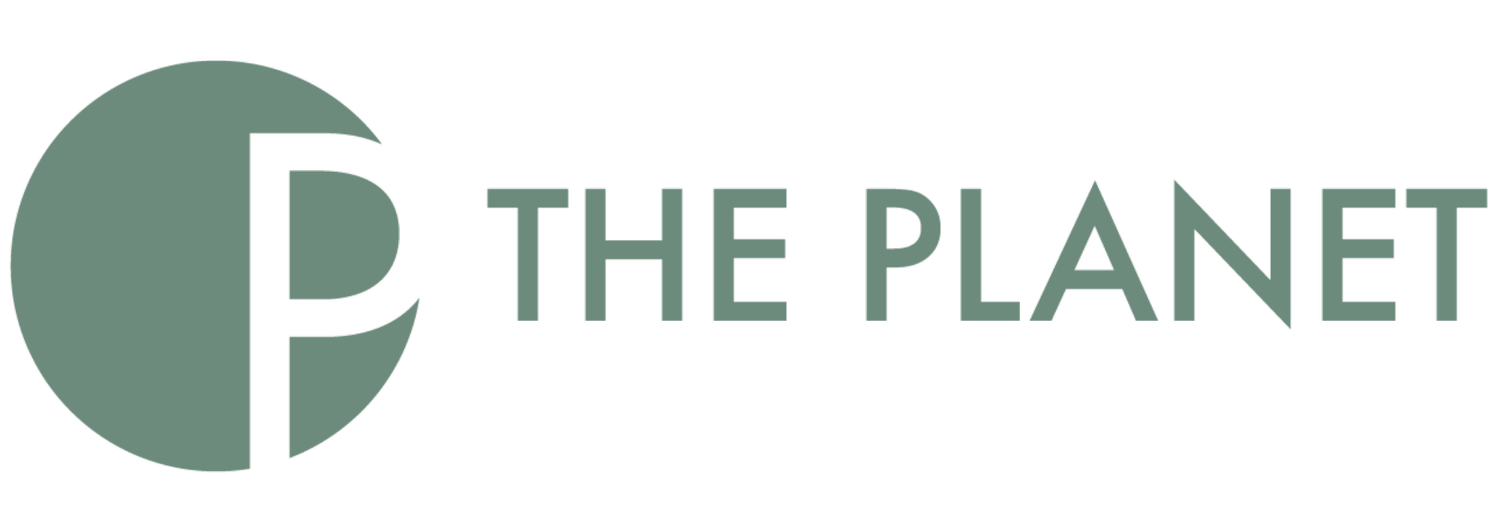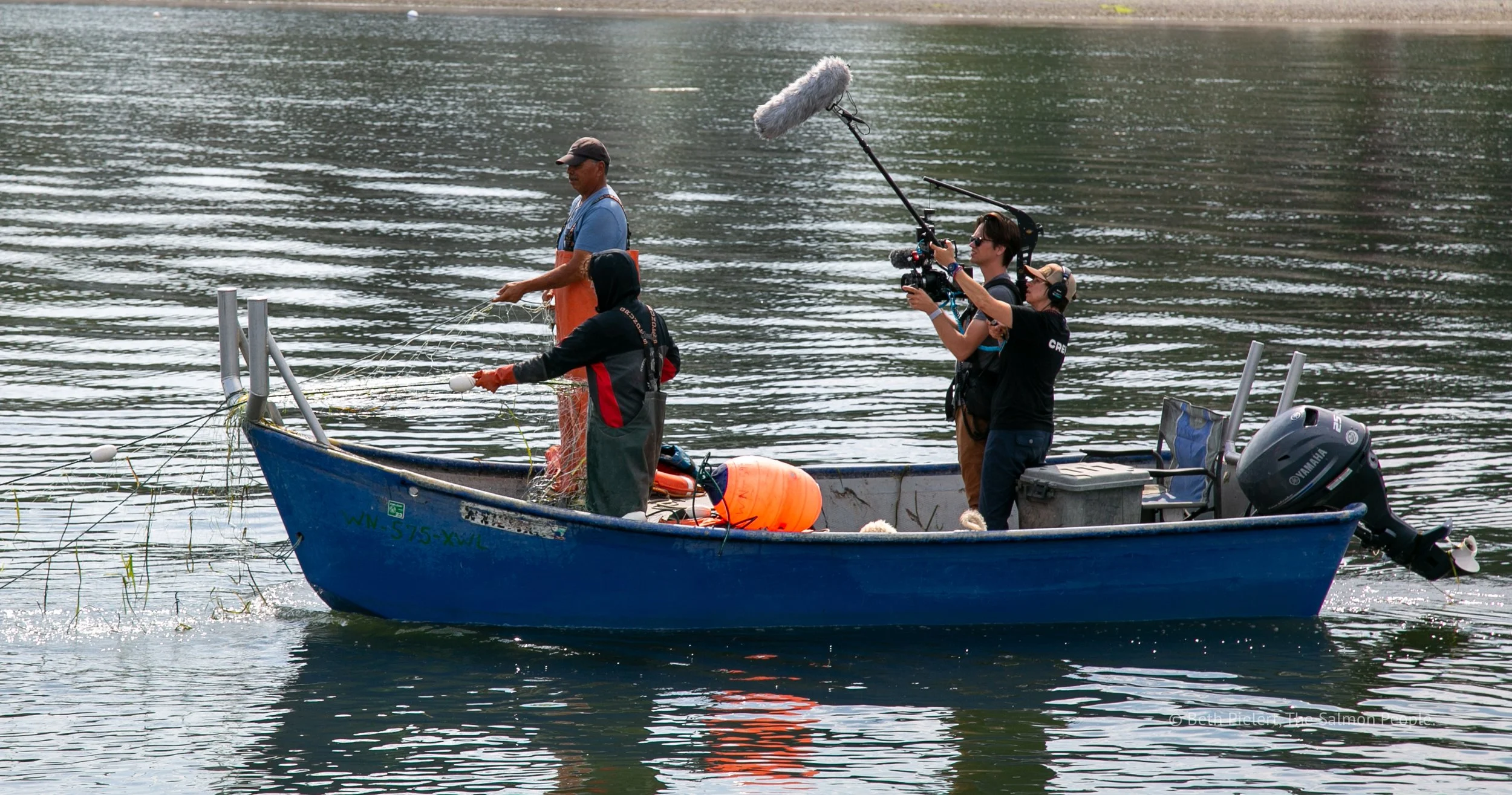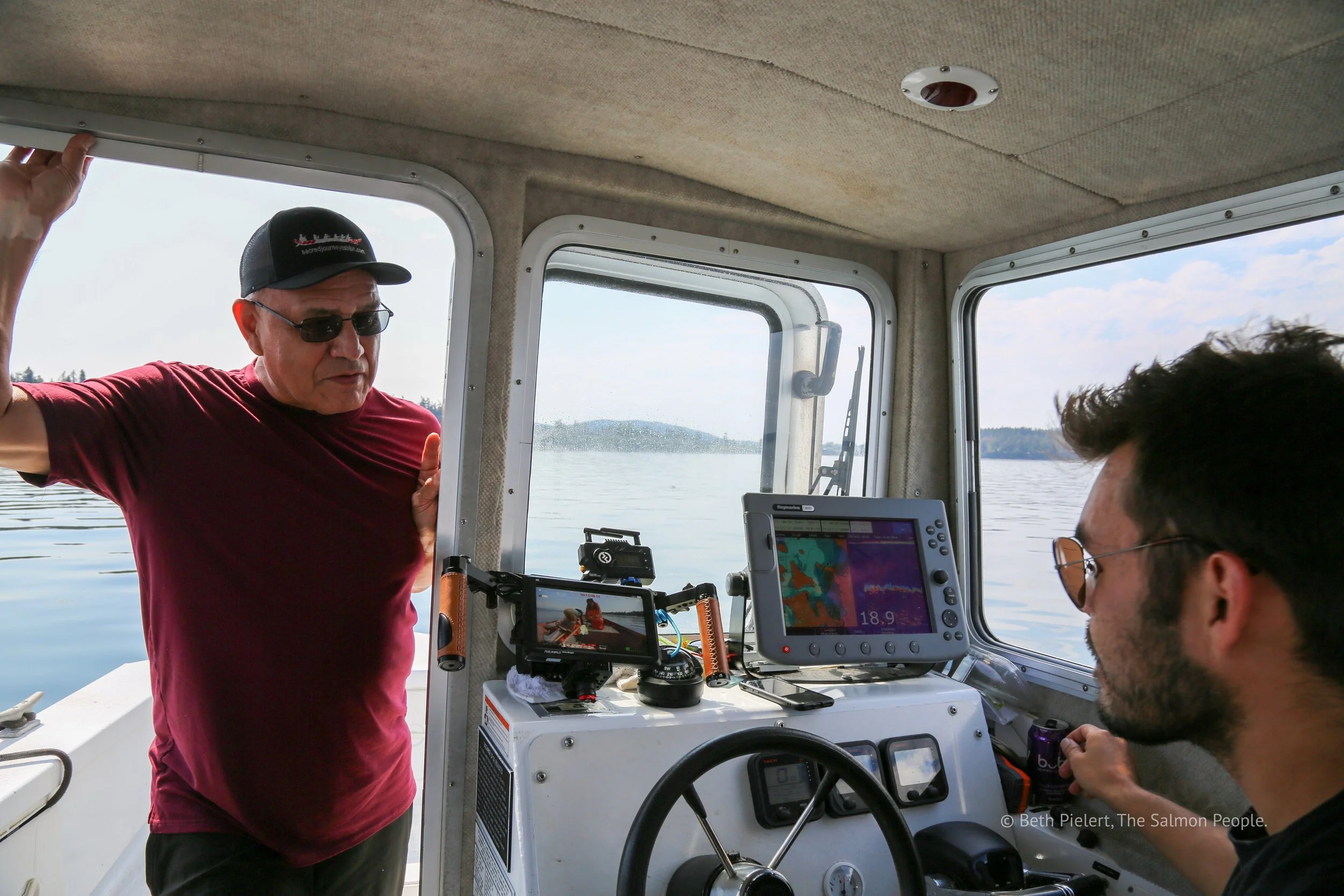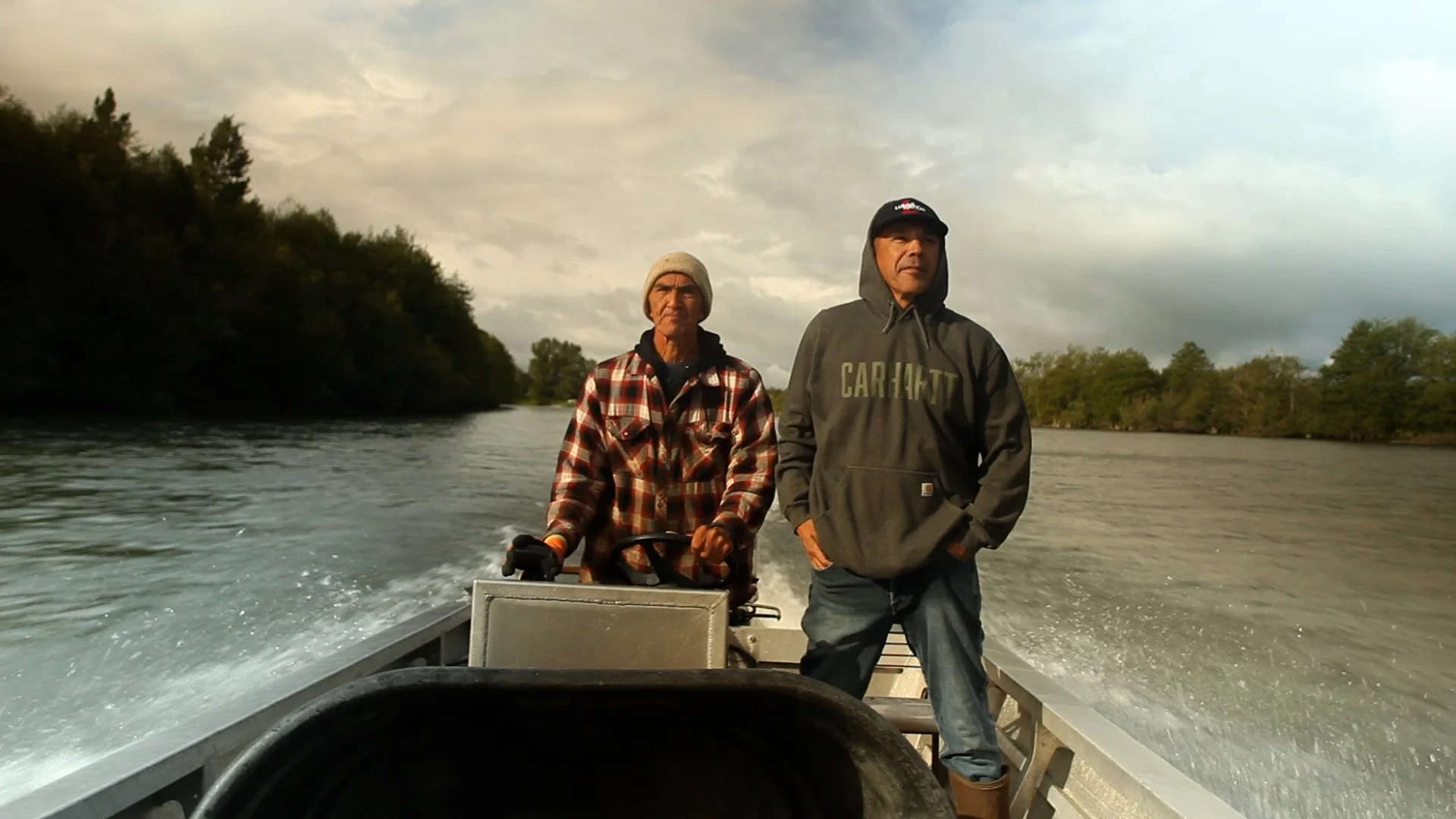Voices of the Salmon People
Darrell Hillaire created Children of the Setting Sun Productions in the honor of his great grandfather, a Lummi Nation member who witnessed the treaty signings of Mukilteo in 1855. This October, Hillaire and the production team completed filming the Salmon People, a documentary about the Lummi Nation’s reliance upon salmon as a way of life.
Story by Chauncey Gummere
December 8, 2022
The sun streamed through the window of the cabin where Darrell Hillaire and his crew set up their camera equipment in preparation for the final recordings in the Salmon People documentary. The camera crew wrapped up filming where it all began for the sockeye; Hillaire and the crew followed the sockeye salmon during their dominant run from the Salish Sea up to Adams Lake in British Columbia, where the fish returned to spawn at the end of their cycle.
Salmon fishers Troy Olsen, Troy Olsen Jr., Beth Pielert and Jon Carroll, from bow to stern, film on Sammish Bay in August 2022. Photo courtesy of Eagle Borsey.
The sockeye have been endangered since 1991 and over 70% of the salmon listed as endangered or threatened are not keeping pace with recovery and need immediate action, according to the Washington State Strategy to Recover Salmon. The documentary represents a launching point for Children of the Setting Sun Productions (CSSP) in a campaign to raise awareness for salmon and the Indigenous community.
In 2014, Hillaire formed CSSP as a nonprofit in memory of his great grandfather, Frank Hillaire. Frank was among the youths who witnessed the treaty signings of Mukilteo in 1855 and were tasked with the responsibility of making sure the generations that followed never forgot this moment. It was with this mission in mind that Frank began a dance troupe called the Children of the Setting Sun in 1900 – and it is in his memory that CSSP continues their work with film and audio production today.
Darrell Hillaire, a Lummi Nation member, founded the Salmon People Project and CSSP, and has been interested in the conservation of salmon since 2010, when an abundance of salmon returning from a dominant run elicited excitement in his community.
Executive Producer and Co-Director Darrell Hillaire chats with NWIC boat captain Thayne Yazzie, waiting for the fishers to settle between shots on Sammish Bay in August 2022. Photo and caption courtesy of Beth Pielert.
“It really caused a lot of jubilation in our community,” Hillaire said. “I got really interested in that and thought we should try to record [it] because it's only every four years that that feeling within our community is quite apparent and quite uplifting.”
While a majority of salmon return from the sea after two or three years, other stocks of sockeye return after four or five, making these fourth-year dominant runs significantly larger than any of the standard runs. Instead of only thousands of fish returning for spawning, upwards of four million can be expected during a dominant run.
The threat to salmon affects the lives of many in the Pacific Northwest, and to combat this, CSSP created the Salmon People Project which consists of endeavors like their flagship 90-minute documentary – currently referred to as the Salmon People, though they are still testing names – along with a think tank designed to refine their projects in collaboration with the voices of their community.
“The Salmon People have fished sustainably for over 16,000 years,” said Beth Pielert, co-producer, co-director, co-writer and editor of the documentary. “In only a few hundred years, industrialization, overfishing, the damming of the rivers, fish farms, deforestation and habitat destruction have dwindled the last of the Pacific wild salmon to under 5% of what once was.”
One fisher, Ellie Kinley, ruminated on the impacts of industrialization and damming while aboard their boat – a purse seiner named the Salish Sea. They said salmon holds intrinsic importance for their community.
“It's more than a living. It's more than a way of life. As someone who's done it for 35 years, it's what completes me,” Kinley said. “It's not necessarily [about] catching fish. It's being back out on the water in the islands, amongst all our villages, and you literally feel the presence of all our ancestors all around.”
Kinley, a member of the Lummi Nation and one of the main characters of the documentary, said the tribe was not allowed to fish sockeye for five years. Their ship passed by other non-tribal commercial fishers through Hood Canal as Kinley and crew discussed how much more fishing meant for them than it did for these other ships.
“I just always want people to know that it makes us who we are as Lummi people to be the largest tribal fishing fleet,” Kinley said. “Because it's what we've always done, and we always need to do it; there can't be a day when we can't do it because we'll just end up being really broken people if you take that away from us.”
Kinley is only one of the many voices shared in the documentary. Several others from the Salmon People share their stories and plights, as well as giving clarity to the lifelong salmon crisis being fought by the tribes of the Salish Sea.
“[Hillaire] had the vision for this film back in 2010 when he saw this big salmon run happen, and so there were a few moments between 2010 and 2017 that he brought on some sort of filmmakers,” said Jon Carroll, director of photography and production manager on the documentary. “[But] it really started picking up in 2017,” when Hillaire’s vision became an official project and CSSP entered the first stages of pre-production.
Filming finished on Oct. 7, 2022, and they will now spend the next three months in post-production editing the film for a rough cut. They will hold a private screening in January 2023 for the Lummi community, to receive feedback before finalizing the film for the broader public.
The documentary has been licensed by Vision Maker Media, a nonprofit organization working with public broadcasting stations to bring Native American storytelling to a larger audience.
Carroll said they are hoping to have a final cut by May 2023, but these plans are always evolving and could adapt into a release in early 2024.
Pielert said that a lot of this comes down to the decision of whether or not to push back the public broadcasting to do a preliminary film festival run. She added that based on these decisions, they are tentatively aiming for either November 2023 for Native American Heritage Month or April 2024 for Environmental Awareness Month.
The documentary shines a light on the decline in salmon over the years due to industrialization and the rivers being too warm, as climate change continues to push cooler seasons further towards the end of the year. It also acts as a vessel for the Lummi people to share their story, giving voice to their ways of life.
Tla’kalin Ces’xen Steve Solomon and W’tot lhem Jay Julius check on the fishers during spring Chinook fishing on the Nooksack River in May 2021. Photo courtesy of Beth Pielert.
“Indigenous people [are] the first stewards and remaining stewards of the land, so we're very well still connected in many ways to our universe [and to] the environment,” said Francene Blythe-Lewis, executive director of Vision Maker Media. “These stories that we share come from both that traditional heritage of that knowledge passed from generation to generation, but also, stories are contemporary about today and what's going on.”
She said Indigenous people’s connections to both their traditional history and the contemporary issues of the environment at large is what makes it so crucial to have these stories made into films that get shared with the public.
“When we start to see the world from a different viewpoint, that's when we really start to stretch and expand into full humans,” said Kamarie Chapman, a senior instructor at Western Washington University’s drama department who focuses on the underrepresented voices of playwrights. “The beauty of film and performance is that it brings those perspectives to communities in a way that entertains.”
CSSP plans to follow the documentary's release with a six-part video series promoting movements led by Indigenous communities. Their goal is to use their position to continue to help Native American storytellers get their stories out there.
“I think Children of the Setting Sun is doing a wonderful job of telling [our] story,” Kinley said. “[They are] just making sure the story gets documented and told, while there's still a chance to make a difference.”
Robert Chauncey Gummere is a senior public relations major concentrating on international relations. He plans on using his skills to help diverse cultures work together towards common goals.



